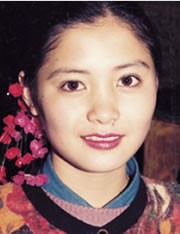Hongjin Tai in China

Photo Source:
Copyrighted © 2026
Operation China, Asia Harvest All rights reserved. Used with permission |
Send Joshua Project a map of this people group.
|
| People Name: | Hongjin Tai |
| Country: | China |
| 10/40 Window: | Yes |
| Population: | 97,000 |
| World Population: | 97,000 |
| Primary Language: | Tai Hongjin |
| Primary Religion: | Ethnic Religions |
| Christian Adherents: | 1.50 % |
| Evangelicals: | 1.40 % |
| Scripture: | Unspecified |
| Ministry Resources: | No |
| Jesus Film: | No |
| Audio Recordings: | No |
| People Cluster: | Tai |
| Affinity Bloc: | Southeast Asian Peoples |
| Progress Level: |
|
Introduction / History
The golden era of the Tai (Dai) nationality in China began in 1340 when the Tai chief, Sifeka, established an independent kingdom in Luchuan (present-day Dehong). The kingdom lasted for 100 years, until it was attacked by Ming Dynasty troops from 1441 to 1448. An army of 150,000 soldiers was mobilized from all over China to attack the Tai Kingdom and bring it to its knees. To this day the Tai have never again had their own homeland in China. Numerous Tai fled the warfare and scattered throughout southern China - they are the ancestors of today's Hongjin Tai. Those living along the Yangtze River in northern Yunnan are described as "a hidden pocket of 10,000 Tais who long ago moved far away from their southwest homeland."
The Hongjin Tai are also known in the Wuding area as the Hua Gongji (Flowery Rooster) Tai. The description of Hongjin Tai seems to be a broad one and may be a generic description of those Tai groups in China who do not fit into one of the recognized classifications.
What Are Their Lives Like?
Many of the Hongjin Tai have assimilated to Chinese culture. Few now wear any traditional clothing, and many of their children cannot speak the language.
What Are Their Beliefs?
Various Hongjin Tai groups practice different religions depending upon their location. These include animism, polytheism and Theravada Buddhism.
There are approximately 1,000 Hongjin Tai Christians in the Luquan area of northern Yunnan. The China Inland Mission commenced work among them in the early 1900s. In the 1980s "the Lipo used Mandarin Chinese to bring the gospel to the Hua Gongji ('Flowery Rooster') tribe. ... So many hundreds of Tais have come to the Lord ... this year they have dedicated their first church." The Hongjin Tai living in the southern part of Sichuan Province were visited in 1914 by William Dodd, a missionary working in northern Thailand. Seventeen Hongjin Tai families soon became Christians. Dodd taught them to read the Northern Thai script, enabling them to read the Bible. It is not known if they still use this script - which is practically extinct in Thailand. Dodd reported, "Three families from the same village destroyed their idols and put away all traces of demon worship, accepted Christ and came for study faithfully. There are but thirty families in the village and twenty of them are now Christian."
What Are Their Needs?
Without the guidance of Christ, these people will be lost in this life and the life to come. They need someone to go to them as Christ-bearers.
Prayer Points
Pray for the spiritual blindness and bondage to the evil one to be removed so they can understand and respond to Christ.
Pray for the Lord to provide for their physical and spiritual needs as a testimony of his power and love.
Pray that the Hongjin Tai people will have a spiritual hunger that will open their hearts to the King of kings.
Pray for an unstoppable movement to Christ among them.